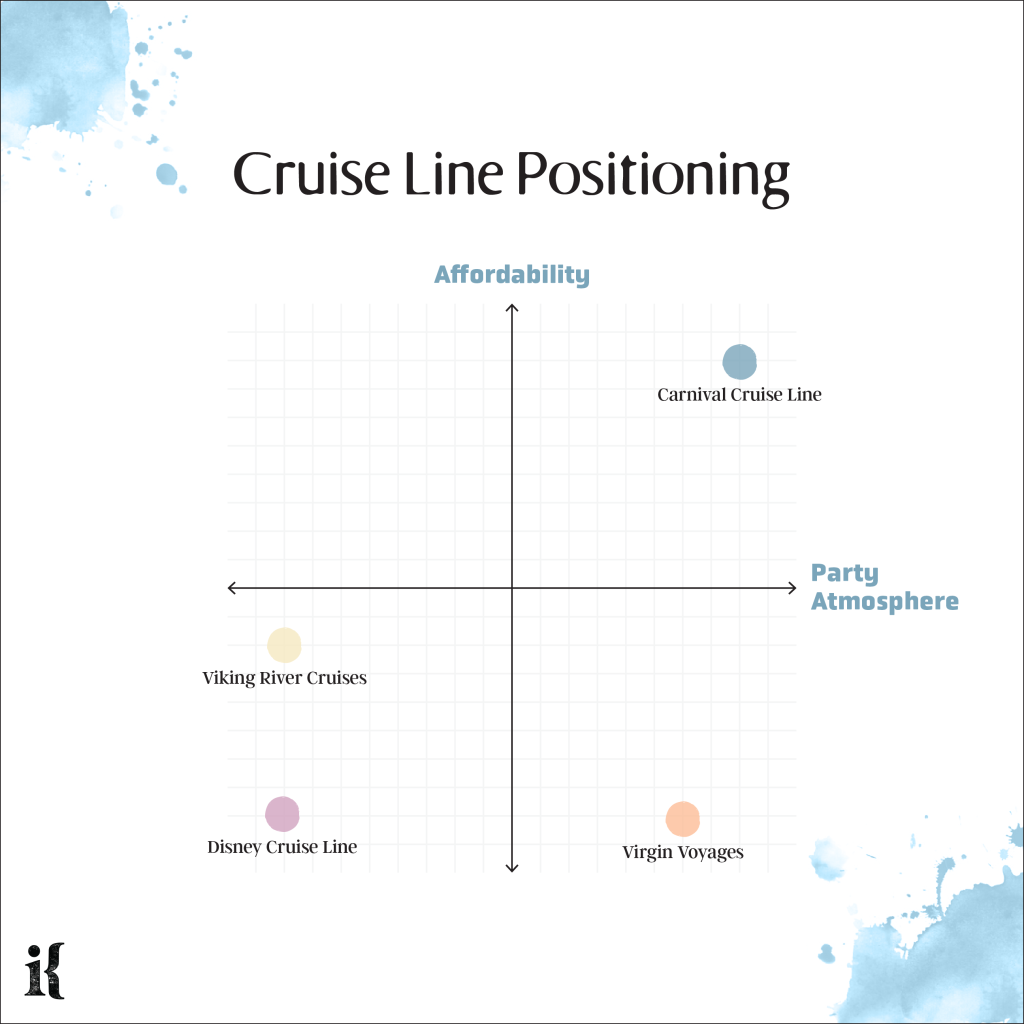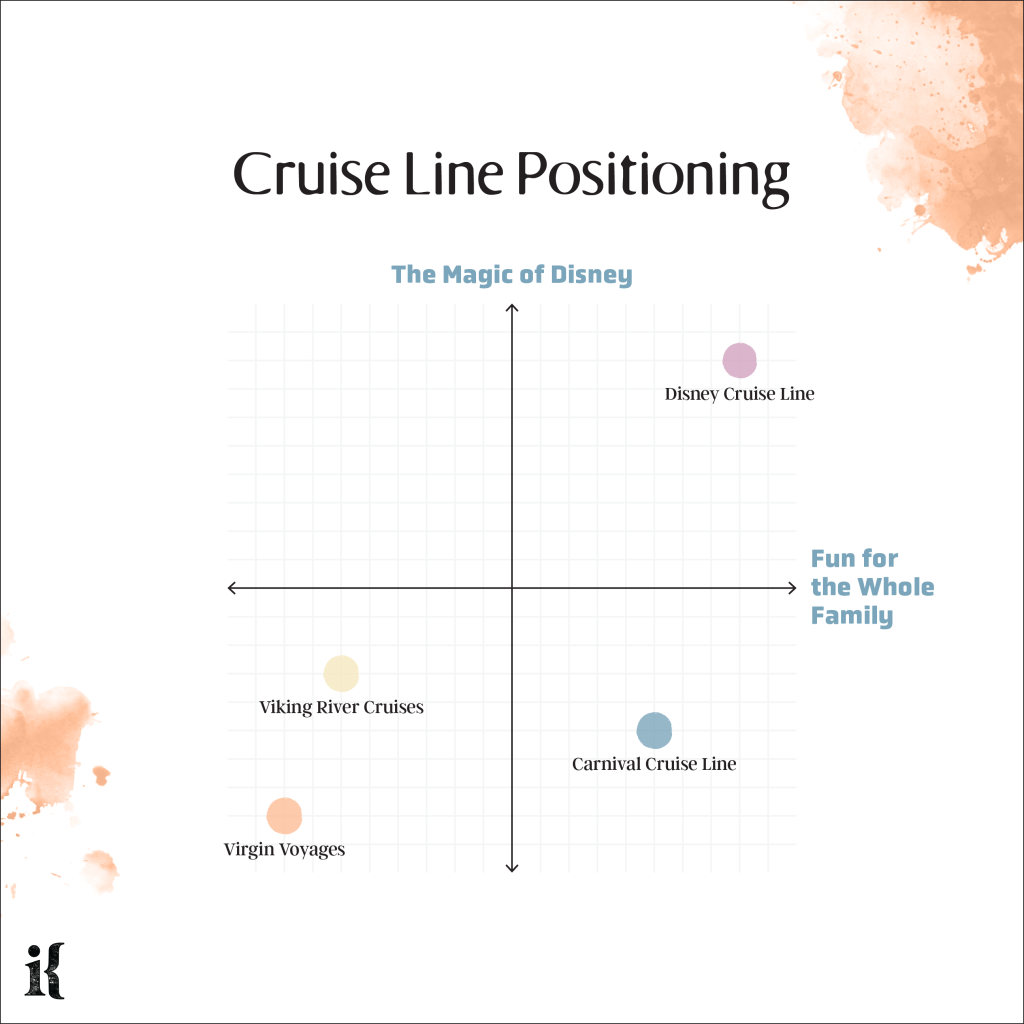Higher Education ROI
Positioning and X/Y Thinking

Positioning and the X/Y Axis
If the price of being tossed into a big category like “state schools” or “community colleges,” is irrelevance, then the job of positioning is to elevate the short-hand to something more distinctive and memorable. We need to think of positioning as a process by which we can help prospective students (with particular needs and interests) to place us in a smaller, more unique box where have very few others with us (if any at all).
The easiest way to think about this is a simple X/Y axis which results in 4 quadrants whereby the upper right quadrant represents the most elevated and esteemed position along the two dimensions represented. The challenge, though, is to think about the labels on these dimensions. For the sake of understanding, let’s use Cruise Lines as an example industry.
If I think of positioning in the industry of cruise lines, it’s pretty easy to tell from their advertising and communications how they think of themselves and how they want customers to do the same. Broadly speaking, they all do a few things in a similar way. So when I think about all of them together—their collective big box—we might say that they all float and serve food and drinks. In the figure below, you can see how that approach renders everyone in the same diluted and undifferentiated position.

To combat this, the promise of positioning is to think about re-defining the X and Y axes in a way that renders the others in a less attractive position. Carnival Cruise Lines approaches their offering by focusing on affordability and a party atmosphere. For people who are looking for an inexpensive option with lots of fun, music, and games, Carnival is a perfect fit.

Viking River Cruises takes a different approach, speaking to things like learning, expanding horizons, and touring the world’s famous museums and relics. The images of passengers are mostly of those in their 60s and above, going so far as to say that children aren’t permitted on board. For those cruise passengers looking for a kid-free environment while satisfying their intellectual curiosity, Viking works well.

Virgin’s offering takes a different approach. Playing off of association of Richard Branson—known for success, sophistication, fun, and cool—the brand positions itself as having a no-kids atmosphere (like Viking) but with fewer book clubs and more of a Miami nightclub vibe. Like Carnival, it promotes a party atmosphere but with more of a Vegas aura than college Spring Break.

To round things out, Disney Cruise Lines is all about kids and family. It will certainly serve you a cocktail, of course, but partying is nowhere near the brand aura. It’s much more focused on family and togetherness, and supported by the mystery and magic of the Disney characters.

Like our friends the Coca-Cola drinkers, it’s possible that customers outside the customer focus might try other offerings. As an example, loyalists to Viking River Cruises might accompany their adult children and grandchildren on a Disney Cruise on occasion. But none of these cruise lines appear to be attempting to be all things to all cruise passengers. Likewise, neither should your college or university.
Like what you're reading?
Subscribe to our newsletter to get the latest insights in Higher Education and thought leadership.


